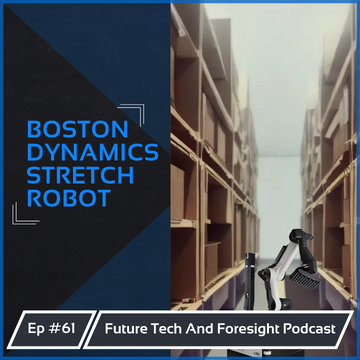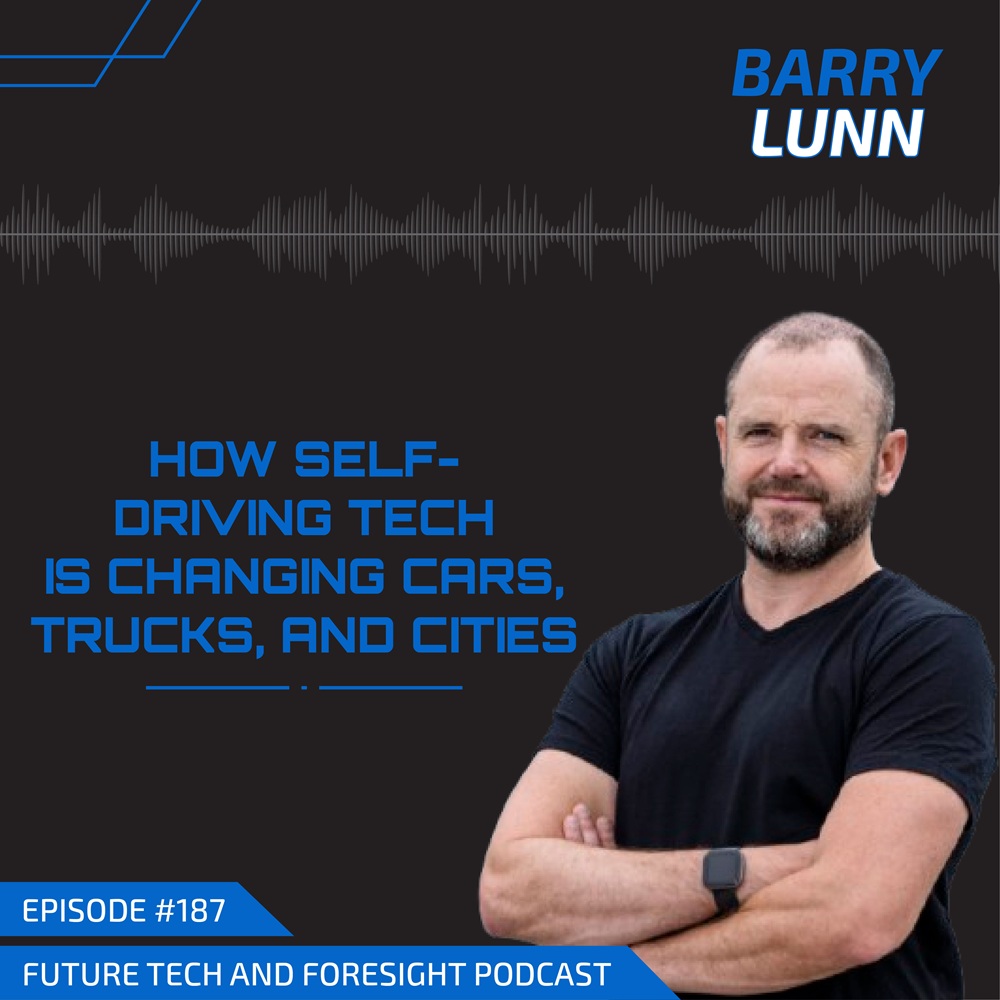Transcript
Intro
One of, if not the most well known robotics company today is Boston Dynamics. And they have recently introduced another robot called Stretch, which seems quite different from its previous robots. I’ve referenced Boston Dynamics a number of times on the podcast before but today I want to explore the company a little bit further, and also explain why this new robot might actually be quite important.
Boston Dynamics
Has built its fame on its advanced research and a number of viral videos showing robots doing things that were previously thought impossible. Some of the first show the ‘BigDog’ robot being tested in different environments, being able to self stabilize after being pushed, or walking over a steep hill, even on icy surfaces.
I particularly like a video that shows the progress the company achieved over a 10 year time frame. Starting with a ‘Petman’ robot unsteadily walking on what seems to be two shaky legs with a safety harness to prevent it from falling, and ending with the Atlas robot performing cartwheels, jumps and even handstands.
For any tech enthusiast videos like these were shared to showcase some of the growing capabilities of AI and robotics, and for others, they were used as warnings of the coming robot apocalypse. These fears were augmented due to the fact that, though Boston Dynamics was originally spun out of MIT, some of the early research contracts were from the US Navy and DARPA.
But the media buzz of Boston Dynamics was attributed more to its impressive robots than anything else. From Big Dog, to Handle, to Atlas, to the now commercial robots Spot and Stretch, the impressive capabilities and applications have I think made more people aware of what robots today can be used for. It’s worth looking at a few of these:
- BigDog, though eventually canceled by DARPA due to it being too loud, would have been able to carry about 150kgs in environments too rough for vehicles, acting as an autonomous pack mule for US troops. It would walk at 6.4km/h and go up inclines up to 35 degrees. As an experienced trekker, this is actually very impressive for a robot.
- Petman, the bipedal unsteady robot mentioned before was developed for the US army to walk and function as closely to a human as possible in order to test and evaluate the next generation hazmat suits. One of the overall interesting uses for autonomous robots is their ability to be used instead of humans in emergency situations such as search and rescue for fire, nuclear and other conditions.
- Atlas, perhaps the most well known robot the company, is a 6foot tall agile anthropomorphic robot. It has been shown to do acrobatic feats like jumping, handstands, even jumping from one platform to another in parkour like movements. It also has been designed for a variety of search and rescue tasks including driving vehicles, removing rubble, opening a door, and connecting a hose. But I think the reactions to this robot have been more interesting than the robot itself.
“ The New York Times said that its debut was “a striking example of how computers are beginning to grow legs and move around in the physical world”, describing the robot as “a giant – though shaky – step toward the long-anticipated age of humanoid robots.” Gary Bradski, a specialist in artificial intelligence, declared that “a new species, Robo sapiens, are emerging”.”
- Spot is the company’s smallest robot. At only 25kg, the four-legged autonomous ‘robodiog’ is the first commercial robot for sale with a $75,000 price tag. It has already been used in a police bomb squad and in examining a launchpad test site after a SpaceX explosion.
- As mentioned at the start Stretch however, has a different application, and though not as flashy, may actually be a more important technology overall.
What is Stretch?
Stretch is a combination of two main robot technologies. A mobile base or AGV. Think of the orange Amazon Kiva bot that zooms around their warehouses picking up and moving boxes, and the robot arm with gripper at the end. There is also a perception mast to the side of the arm that acts as the robots eyes, which hosts the vision system enabling autonomous movement. As with other AGVs, the base has 4 wheels, can move in any direction, and can make tight turns. The base itself is about the size of a pallet which fits with its main goal.
Though only at a prototype phase now the main application Stretch is geared for is logistics, namely moving boxes in warehouses. This is a far cry from the flashy acrobatic feats of Atlas, or military possibilities of BigDog. And some have even begun questioning whether this move marks a negative turn for Boston Dynamics becoming just a typical robotics company like any other. This critique is directly connected to the shift in ownership. Though originally a spin-off from MIT, Boston Dynamics has shifted hands a few times and in December of 2020 the Hyundai Motor Group acquired an 80% stake in the company.
Boston Dynamics has for the most part has been a robotics research lab. This is not to take away from the impressive work that has been done, but shifting to a commercial organisation, robotics applications, and profitable ones, will more likely be linked to mundane tasks than flashy viral videos. It’s hard to remain committed to long-term scientific goals when you’re owned by a commercial enterprise that counts profits by the quarter. So it might be that the days of robotic videos going viral from Boston Dynamics are over. Either way, what makes Stretch an important technology?
Why is it important?
Hyundai is one of the leading companies in mobile robot research and development, and has already made extensive research in creating autonomous robots and vehicles that can navigate various environments and terrains. Flexibility is one of the most essential aspects of manufacturing and logistics with today’s fast paced and ever changing consumer demand. This is particularly true for smaller businesses which cannot get the advantages of economies of scale that large corporate producers can get when a large fully automated system is setup. A robot like Stretch can allow a small business to setup a partially automated logistical system very quickly and with limited capital expenditure due to its plug and play nature. This could support businesses to grow faster and enable employees to shift their work tasks to managing the robot rather than doing the mundane work of box moving compared to before.
However it is still unclear whether Stretch will have collaborative functionalities like some of the newer robot releases from ABB, or will require a guard system to stop workers from being hit if they get near the robot. But either way Stretch might have a real benefit for logistics companies and it will be interesting to see how it is adopted in 2022 when it is ready.
Final Thoughts
Finally I think it also showcases that even though the leaders of robotics development can showcase what robots can do, doesn’t necessarily mean that that is what the robots will be used for. It might be longer than expected before we see robots all around us as depicted in Sci Fi films. This is especially the case if there is no profitable option for making awe inspiring robots. Though I can appreciate the business and financial decision of developing a practical and useful robot, I do think something is lost if Boston Dynamics no longer continues to showcase state of the art robotics for the world.











